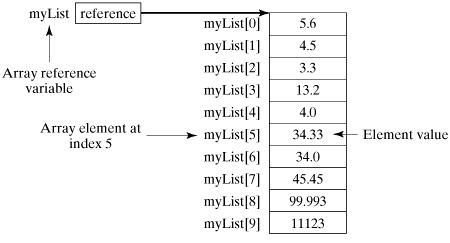
- PowerShell - Home
- PowerShell - Overview
- PowerShell - Environment Setup
- PowerShell - Cmdlets
- PowerShell - Files and Folders
- PowerShell - Dates and Timers
- PowerShell - Files I/O
- PowerShell - Advanced Cmdlets
- PowerShell - Scripting
- PowerShell - Special Variables
- PowerShell - Operators
- PowerShell - Looping
- PowerShell - Conditions
- PowerShell - Array
- PowerShell - Hashtables
- PowerShell - Regex
- PowerShell - Backtick
- PowerShell - Brackets
- PowerShell - Alias
- PowerShell Useful Resources
- PowerShell - Quick Guide
- PowerShell - Useful Resources
- PowerShell - Discussion
Powershell - Array
PowerShell provides a data structure, the array, which stores a fixed-size sequential collection of elements of the any type. An array is used to store a collection of data, but it is often more useful to think of an array as a collection of variables or objects.
Instead of declaring individual variables, such as number0, number1, ..., and number99, you declare one array variable such as numbers and use numbers[0], numbers[1], and ..., numbers[99] to represent individual variables.
This tutorial introduces how to declare array variables, create arrays, and process arrays using indexed variables.
Declaring Array Variables
To use an array in a program, you must declare a variable to reference the array, and you can specify the type of array the variable can reference. Here is the syntax for declaring an array variable −
Syntax
$A = 1, 2, 3, 4 or $A = 1..4
Note − By default type of objects of array is System.Object. GetType() method returns the type of the array. Type can be passed.
Example
The following code snippets are examples of this syntax −
[int32[]]$intA = 1500,2230,3350,4000 $A = 1, 2, 3, 4 $A.getType()
This will produce the following result −
Output
IsPublic IsSerial Name BaseType -------- -------- ---- -------- True True Object[] System.Array
The array elements are accessed through the index. Array indices are 0-based; that is, they start from 0 to arrayRefVar.length-1.
Example
Following statement declares an array variable, myList, creates an array of 10 elements of double type and assigns its reference to myList −
$myList = 5.6, 4.5, 3.3, 13.2, 4.0, 34.33, 34.0, 45.45, 99.993, 11123
Following picture represents array myList. Here, myList holds ten double values and the indices are from 0 to 9.

Processing Arrays
When processing array elements, we often use either for loop or foreach loop because all of the elements in an array are of the same type and the size of the array is known.
Example
Here is a complete example showing how to create, initialize, and process arrays −
$myList = 5.6, 4.5, 3.3, 13.2, 4.0, 34.33, 34.0, 45.45, 99.993, 11123
write-host("Print all the array elements")
$myList
write-host("Get the length of array")
$myList.Length
write-host("Get Second element of array")
$myList[1]
write-host("Get partial array")
$subList = $myList[1..3]
write-host("print subList")
$subList
write-host("using for loop")
for ($i = 0; $i -le ($myList.length - 1); $i += 1) {
$myList[$i]
}
write-host("using forEach Loop")
foreach ($element in $myList) {
$element
}
write-host("using while Loop")
$i = 0
while($i -lt 4) {
$myList[$i];
$i++
}
write-host("Assign values")
$myList[1] = 10
$myList
This will produce the following result −
Output
Print all the array elements 5.6 4.5 3.3 13.2 4 34.33 34 45.45 99.993 11123 Get the length of array 10 Get Second element of array 4.5 Get partial array print subList 4.5 3.3 13.2 using for loop 5.6 4.5 3.3 13.2 4 34.33 34 45.45 99.993 11123 using forEach Loop 5.6 4.5 3.3 13.2 4 34.33 34 45.45 99.993 11123 using while Loop 5.6 4.5 3.3 13.2 Assign values 5.6 10 3.3 13.2 4 34.33 34 45.45 99.993 11123
The Arrays Methods Examples
Here is a complete example showing operations on arrays using its methods
$myList = @(0..4)
write-host("Print array")
$myList
$myList = @(0..4)
write-host("Assign values")
$myList[1] = 10
$myList
This will produce the following result −
Output
Clear array Print array 0 1 2 3 4 Assign values 0 10 2 3 4